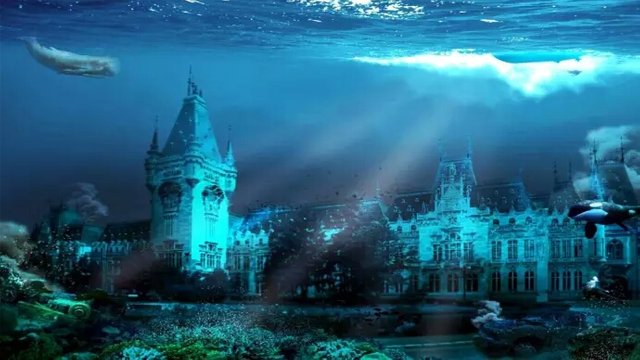What will happen in the next hundred years? - Part 1
Planet Earth is constantly changing. Whether we notice it or not, both small and massive transformation take place on our planet everyday. Whether it’s a falling tree or tectonic shift, something, somewhere, changes irreversibly.
So, it’s not uncommon to ask ourselves, what will these evolution look like at the end of the century? It’s fair to guess our world will look differently than it does in present day, and who knows, maybe it will be more than physical change, but also a shift in how we live our daily lives.
Even if it’s only theories, there are facts and scientific predictions to backup our imaginations, so from a shrinking animal kingdom, to underwater cities, here are a few things that will happen to Earth in the next 100 years. The Part 2 will contain a few more things that may happen. So stay tuned for that.
Underwater Cities. The immediate image you might think of when hearing “underwater cities” is a hidden, majestic world of water dwelling communities, much like folk tales of Atlantis. However, the idea of submerged villages and coastal cities in this context is much more volatile.
For 800 years, humans have been tracking sea level measurements around the world. And for the past few decades, researchers have calculated rising sea levels unlike they’ve ever seen. Of course, the direct reasoning behind such drastic changes is the melting ice caps and other frozen habitats heating up. The channels of ice sheets add thousands of litres of water per day to the ocean, which impacts the rest of the world on land.
Studies by the Intergovernmental Panel on Climate Change last year forecast that the sea level will continue to rise 2 meters over the next one hundred years. However, this is based purely on speculation and current trends. The researchers on the panel admit that increasing global temperatures can increase polar melting, which will speed up the rising seas. So, while 2 meters seems insignificant, that’s just a rough estimate and it could go much higher.
The effects of such a rise would be quite disastrous. 44% of the world’s population resides in coastal cities, and higher sea levels would force many people to move elsewhere. The economics of such cities would enter depressions, and the cost of living would skyrocket.
Thus, cities could be abandoned for more midland settings. The increasing possibility of flash floods would impose better chances of destruction, and the recent blizzard disasters in Boston, Massachusetts that froze city streets would be much more common. On top of it all, tiny coastal villages across foreign countries would have no means to protect themselves with sea walls or preventive measures, thus falling into ghost town status.
So while it’s safe to say no major cities will be on the ocean floor in 100 years, sea levels could make living near water a very major issue, bordering on catastrophic, if our carbon emissions and global up keeping doesn’t improve. The question is do you think we can prevent such a thing or is it inevitable?
Animal extinctions. When most people hear the word “extinction,” we conjure up ideas of the ice age coming to an end or meteor strikes wiping out the dinosaurs. However, endangered species leaving our planet forever occurs much more than you think, usually without public notice.
Since the origins of humankind, we’ve seen hundreds upon thousands of animal species fall extinct before our very eyes, and in the next 100 years, the number of extinction will only grow faster.
Louie Psihoyos, a film maker for National Geographic and director of the humanitarian documentary “The Cove,” recently made a statement claiming that in the next 100 years, we could see half of the Earth’s animal population disappear forever. He’s cited many reasons why, from climate change and habitat destruction, to over-fishing and over-consumption. Many sea creatures and other marine life find their species’ numbers rapidly decreasing heavily due to the Chinese black market. Massive amount of carbon emissions are killing vital ecosystems, to many birds and other creatures who make home near cities and human populations. Even away from civilizations, big game poachers are killing animals despite heavy preventive measures.
The one positive point to all of these monstrosities is animal extinction can mostly be prevented. If we as a society come together to protect nature and the bountiful animal life that walks the Earth, we can help other species sustain for the next 100 years and beyond. If not, many breeds such as orangutans, gorillas, tigers, elephants, rhinos, turtles, and leopard species will be a thing of the past. Even salmon, the most common fish used for consumption, could be gone from the Earth, leaving us with Chinese-farmed synthetic salmon. It’s a scary proposition to think.
So those are two changes that will happen to Earth in the next 100 years. This is just the Part 1 to this series. Stay tuned for the Part 2
